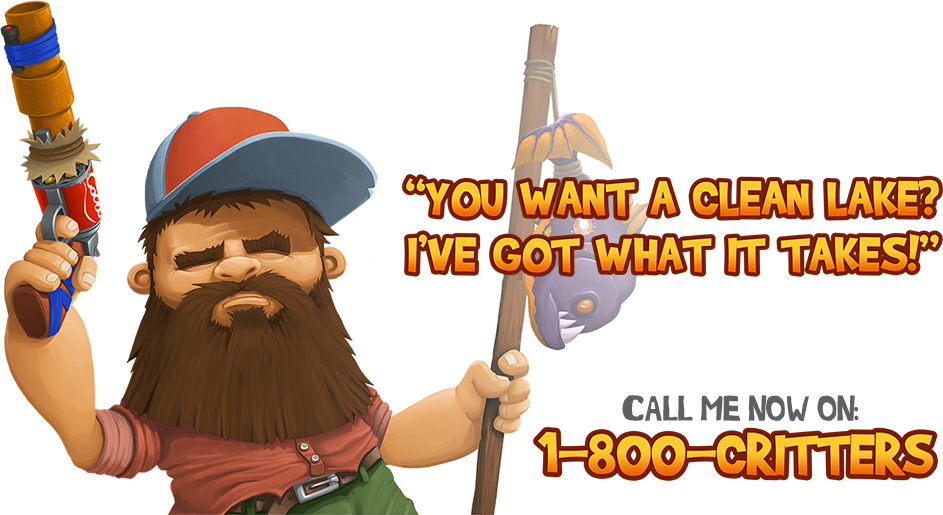Dick Wilde is a VR shooter released in 2017 on Steam and the Oculus Store. It won two CopenX awards in 2017 for Best Nordic VR and Best Global VR game.
Dick Wilde was the first major project I took on as a game designer at Bolverk Games. An early prototype of the game was already in development at the point in time where I was hired.
My primary responsibility working on Dick Wilde was the game’s design and vision.
The premise of the game was fairly simple; You play the role of a veteran swamp cleaner and take on the job of clearing swamps and lakes of dangerous mutant animals using a variety of wacky home-made weapons.
Dick Wilde is the archetype of VR shooters, where the main focus of the game is to have fun shooting. Dick Wilde chimes in with a unique setting and an emphasis on hardcore arcade gameplay where players play for the highest scores.
The high difficulty of the game became a part of the game’s identity among its players and the game’s image outwards. Despite the difficulty of the game being an entry barrier, particularly to first time VR players, the game performed well.
Dick Wilde was developed with social features in mind. While players can compete on world-wide leaderboards when they play on their own, Dick Wilde also features a spectator screen developed specifically for parties where others can follow the action with extra information.
It is a game where being skilled not only feels great, but shows when others watch you play from the couch or over a stream. Few who haven’t tried it and looks at a skilled player playing will think “that looks easy!”. The difficulty of the game and the skills it demands to overcome it shows.

You can watch the reveal trailer of Dick Wilde below:
Link to the Steam store page: https://store.steampowered.com/app/585500/Dick_Wilde/
Link to the Oculus store page: https://www.oculus.com/experiences/rift/1237549349646647/
Dick Wilde was largely developed in two months, which can be considered a very short amount of time considering the amount of content, polish, and success of the end product.
At the time, the team consisted of a CEO, an art director, a game designer (me), a programmer, a 3D artist, a 2D artist, and an intern programmer.
